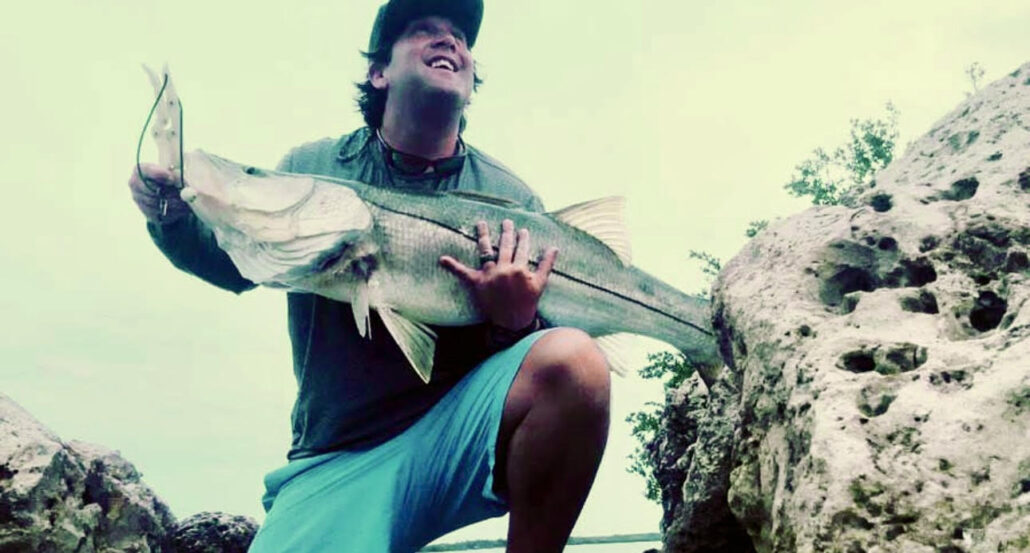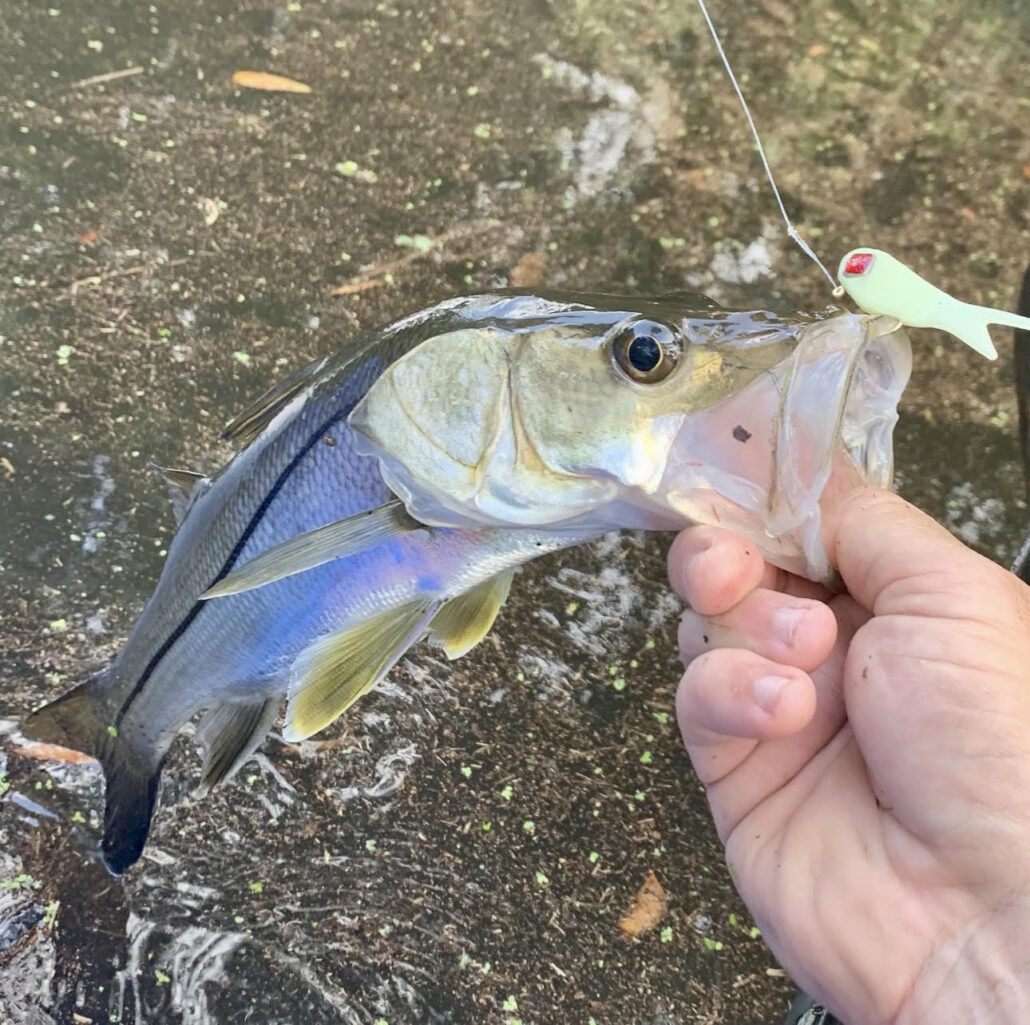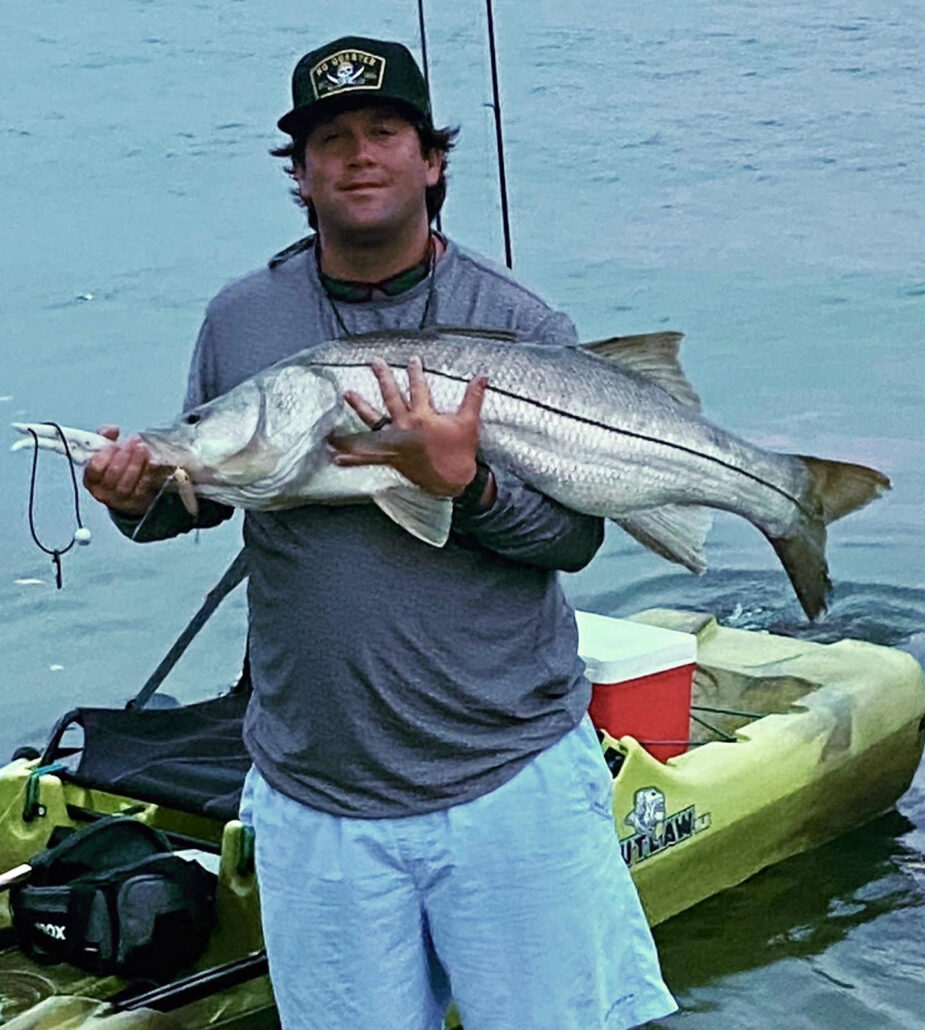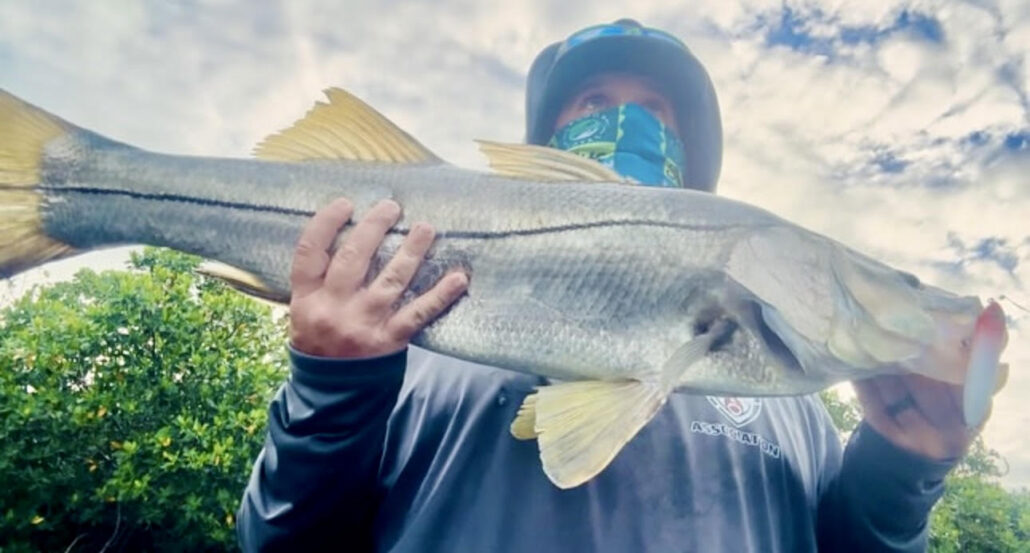
Understanding Snook Migration
Happy Monday Spacefish!
Snook, we all love them. Some of us are better than others at finding them and catching them. The question I think we have all been asking ourselves. Does John Page have superpowers??? Yes, maybe. Probably not, but possibly so. JP may be otherworldly in his ability to consistently land big Snook – but science, research, and data tell me that his ability to consistently find them has nothing to do with dark magic, and is the result of years and years of hard work and dedication. Which is why, if you are looking to hire a guide to put you on a big, once in a lifetime Snook, you should hire John Page. Seriously though, as I write this report, I just saw a Facebook post from John about being up all night catching a ton of big fish. Lots of people love fishing, but there is not anyone on this planet more dedicated to his craft as a profession than John!
Below is a look at Snook migrations. How and why they move from west to east, then back again throughout the course of a calendar year. How there are times when finding them can feel like trying to locate a needle in a haystack, but a look at the data, and a better understanding of why they move and hold in certain areas may be the key to better game-planning, and make for more happy hunting.
Snook: General Information
Snook (Centropomus undecimalis) are found from South Carolina to Brazil, including the Gulf Coast from Florida to Texas. They thrive in various habitats as long as the water quality is good and temperatures remain above 60°F. As euryhaline (fancy word) fish, snook can move between fresh and saltwater, but they are not considered freshwater species. If you plan to fish for them, you’ll need a saltwater fishing license.
All Snook are protandrous hermaphrodites (is this even a real word/phrase?), meaning that as they age, males can transform into females. This change happens between the ages of one and seven years, or when they reach a length of 12 to 35 inches. The transition is rapid and involves both male and female sex cells appearing in the gonads. During this change, female gonads develop directly from male gonads soon after spawning. Because of this, Snook have the unique ability to spawn once as males and again as females within the same breeding season (what a long strange trip it’s been).
They typically spawn from April to October, with peak spawning occurring in June and July, when days are longest. During this period, they gather in specific spawning areas. Salinity is crucial for successful spawning because the density of saltwater helps make the eggs buoyant, increasing the chances of the eggs and larvae being carried to appropriate habitats. Once spawning starts, a snook can release up to 1.5 million eggs every other day, typically around a new or full moon. The eggs hatch after about 28 hours, and the larvae drift toward nearby estuaries on the incoming tide, where they settle once they find a suitable environment.
In their early stages, snook prefer habitats with low salinity or freshwater backwaters, where they can feed on planktonic insects, mollies, and mosquito fish. They seek areas with dense vegetation or emergent plants to protect them from predators like birds. These quiet, sheltered spots with minimal water flow are ideal for their survival. Young snook also have unique adaptations that help them survive in low-oxygen waters, providing them with protection from many other fish that can’t handle such conditions.

Juvenile Backwater Snook in Brackish, Low Oxygenated Water
After about a year, Snook start to move toward the lower estuaries as they lose their ability to thrive in low-oxygen environments. At around 10-12 inches in length, they begin to share the same habitats as adult Snook but must be cautious of being eaten, as larger snook are cannibalistic. To avoid this, smaller Snook often hide around docks and other structures. At this point in their development, their diet shifts to include fish, shrimp, crabs, and plant material.
Male Snook usually become sexually mature by the age of two to three, though some may mature as early as one year. Female Snook typically reach maturity at three to four years old. As they grow in size and age, the chances of a snook being female increase. In Florida’s west coast, by age five, the population of snook is about 50% male and 50% female. While most males transition into females, not all do. The oldest recorded female snook was 15 years old in the Gulf of Mexico and 18 years old on the Atlantic coast. The oldest male snook was 12 years old on the Gulf coast and 15 years on the Atlantic. While the oldest known snook lived to 18, it’s believed they can live for at least 20 years, and possibly as long as 30 years.
In southwest Florida, fish make up about 70% of an adult snook’s diet, with pinfish (20%) and minnows (16%) being the most common, followed by shrimp at 13%. Snook consume pinfish more than ten times as often in the summer than in the winter, even though more pinfish are available in winter. This is likely because pinfish are smaller when they enter the estuary in the winter, and adult snook prefer prey that’s roughly 14% of their own size. Therefore, the tiny pinfish in winter aren’t as attractive to them. Snook eat shrimp year-round, but their consumption increases in the winter months.
During winter, Snook typically have only about a quarter of the stomach contents they would have in summer. This is likely because cold temperatures slow their metabolism, reducing their need for food. Snook are highly sensitive to cold and may become sluggish or even die if water temperatures fall below 60°F for too long.
Snook: Migration Patterns (Indian River Lagoon System)
Snook in the Indian River Lagoon exhibit seasonal migrations influenced by spawning and temperature. Mature snook move to near-shore, high-salinity waters for spawning in the summer (peak in July-August but Spawning can occur anytime between April-October), then move back to the cooler, brackish waters of the lagoon for the winter. Juveniles also migrate to the lagoon’s brackish waters after spawning.
Pre/Post Spawn Migrations – Snook primarily spawn in nearshore waters with higher salinities during the summer months. After spawning, the juvenile snook migrate to the brackish waters of the Indian River Lagoon, where they grow and develop. As they mature, they eventually make their way back to the higher-salinity ocean waters, where they integrate into the adult breeding population.
Winter Migrations – As cold-blooded tropical fish, snook become sluggish when water temperatures drop below 65°F. To escape the cold and avoid predators like sharks and barracudas, they migrate to the upper estuary and lagoon, where they find shelter. During the winter months, Snook typically move to the low-salinity areas of the lagoon, where they remain until temperatures rise again.
Factors Influencing Migration – Snook are influenced by temperature, migrating to cooler waters in the summer and returning to warmer waters during the winter. They prefer to spawn in areas with higher salinity but move to lower salinity regions as winter sets in. Their spawning behavior is linked to specific locations with ideal conditions, which directs their initial migration. During the winter months, the brackish waters of estuaries, like the Indian River Lagoon and its tributaries, offer a safe environment for juvenile Snook and stay-for-the-winter adults.
The Indian River Lagoon is an essential habitat for Snook, providing crucial areas for both spawning and spending the winter. Understanding their migration patterns is important for effective Snook fishing and conservation practices.
Where will the Snook Be?
So as we move through spring, and into summer there are some trends and data that I feel like you should be aware of as an angler. I am using data from a study conducted by the FWC and The University of South Florida, where they tagged 498 total Snook and tracked their movements during spawning seasons from 2008-2014. The Snook tagged ranged from 21-43 inches so keep in mind that everything I say below is looking at adult (sexually mature) or nearly adult Snook.
Spawning season for Snook can vary from the Gulf Coast to the Atlantic, but looking at the spawning season on the East Coast from Cape Canaveral down to Palm Beach County we’re looking at a window from April to October with the peak season being July/August.
At any given time during spawning season 70% of the tagged Snook could be found in the inlets; 18% could be found in nearshore waters along the beaches, and 12% could be found in the Indian River Lagoon Estuary.

Adult Snook in Sebastian Inlet
Not All Inlets Are Created Equal
One of the trends that stood out in the data was that certain inlets seem to hold much denser concentrations of adult Snook during spawning season than others. The big 3 are Sebastian Inlet, the St. Lucie Inlet, and the Jupiter Inlet. There is something that these 3 have in common over the others in the geographic range. Rivers, all 3 of these inlets have rivers that essentially flow in the inlet. The St. Sebastian, the St. Lucie and the Loxahatchee which provide Snook with a convenient winter holding area.
Other Noteworthy Facts
So this last section is kind of a hodgepodge of other facts that I thought were interesting and worth keeping in mind. Snook spawning is asynchronous which means that they all do not go in together at one time, but arrive at different times throughout the spawning season. The average Snook spawns for 38 days. The average Snook is 6x more likely to go to their primary inlet (an inlet within 25 miles to the S/SE of their non-spawning residential area). The average start date for spawning is July 15th. Which means If you wanted to target spawning Snook off the beach, Mid July-Early September would be the time to do it. Lastly, East Coast Indian River Lagoon Snook typically have a “bouncing” migration which means they will travel from the Rivers/Creeks to their Inlet with a stop/start cadence. They will move a bit and then hold up, which means throughout the spring the larger Snook can be spread out anywhere between the tributaries and the inlet. Which means that spoil islands could be great places to check out this time of year.

Adult Snook Along Migratory Path to Inlet
After spending the last month or so pushing deep back into the tributaries of the Indian River Lagoon I plan on field testing my research and seeing if I can catch some Snook in that 20-40 inch range in the areas in between Melbourne and Sebastian Inlet. Let the games begin!
Sources Used
I’d like to offer a special thanks to… The University of Florida and their Institute of Food & Agricultural Science; The Indian River Lagoon Project; The University of South Florida; The Florida Wildlife Commission; and The Sport Fish Restoration Program of the Federal Government’s U.S. Fish & Wildlife Service.
Thanks to the data, and research of the aforementioned organizations and institutions I was able to write this report.
Thanks for taking the time to read this, I hope you find this information helpful and informative. As we approach Easter there is no better time to go shop at Kayaks By Bo, and give yourself an adult Easter basket filled with YakAttack accessories and Fish Skinz shirts!
I’d like to sincerely wish you a Happy Holy Week. May God bless you, and keep you! Stay safe, be happy, and go catch some fish! Until next time!



Thanks for the awesome info, Knox! As far as the legend, John Page, goes… I couldn’t be more impressed by the consistency of his monster catches, but, they seem to be most often at night. I know night fishing is not typically offered as a standard booking for a half or full day trip by guides — does JP offer this? If not publicly, is it because it requires a certain level of skill from the customers? Is it an insurance or liability issue? Essentially, I just want to know how I can arrange a guided trip that offers the best odds of landing one of these big beauties, be there daylight or darkness!
Hey JC, I take clients out at night, but it’s not required to catch them. While snook are more active at night, they will feed throughout the day
Wow Knox. This is incredible! Thanks for your hard work in bringing all the information together!
I’m here to confirm the superpower claims haha
This was extremely informative and very well put together. As always, great work, Knox!